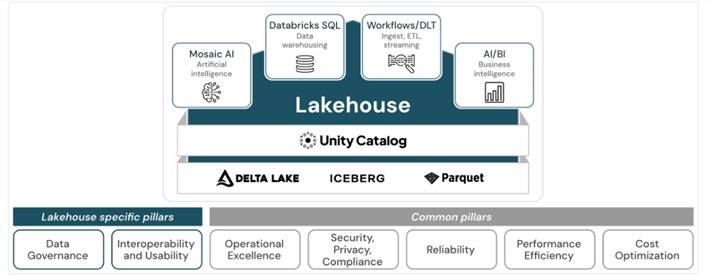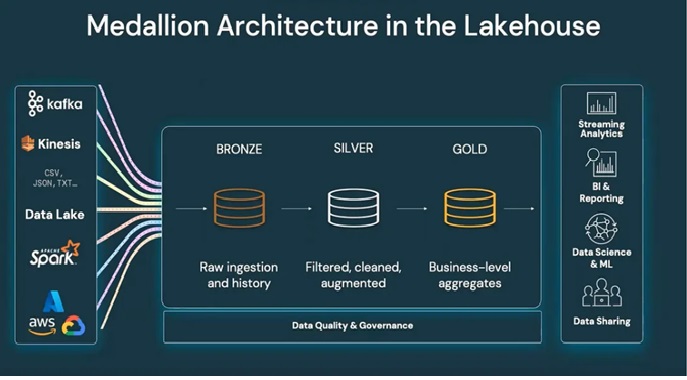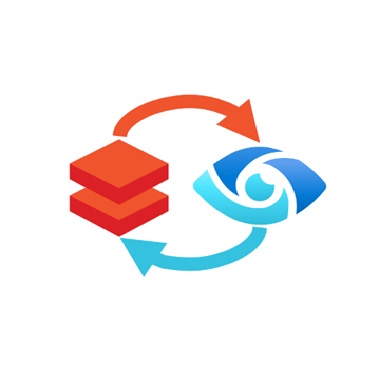What is Databricks? 6 Reasons Why the Future is Already Here!
March 27, 2025 | by adarshnigam75@gmail.com

Introduction
What is DataBricks ? and Why DataBricks ? The world of data analytics is evolving rapidly, with organizations demanding real-time insights, AI-driven decision-making, and scalable data processing. Traditional data warehouses and ETL pipelines struggle to keep up with modern data demands.
Enter Databricks—a unified data analytics platform built on Apache Spark, designed to accelerate innovation by combining data engineering, machine learning, and business analytics in a single collaborative environment.
In this blog, we’ll explore what is Databricks and why Databricks is the future of data analytics, covering:
-
- Technical advantages (performance, scalability, open standards)
-
- Business benefits (cost efficiency, faster time-to-insight, AI integration)
-
- Real-world success stories (Netflix, Comcast, HSBC)
-
- How Databricks compares to traditional solutions
1. What is Databricks: A Unified Data & AI Platform
Databricks was founded by the creators of Apache Spark and is built on an open Lakehouse Architecture, which combines the best of data lakes and data warehouses.
Key Components of Databricks
✔ Databricks SQL – Serverless SQL analytics for BI and dashboards.
✔ Databricks Data Science & Engineering – Collaborative workspace for Spark-based ETL and ML.
✔ Databricks Machine Learning – Integrated MLflow for model tracking and MLOps.
✔ Delta Lake – ACID-compliant storage layer for reliable data lakes.
✔ Delta Live Tables (DLT) – Automated ETL pipelines with built-in quality checks.
2. Technical Reasons Why Databricks is the Future
A. Performance & Scalability with Photon Engine
Databricks introduced Photon, a vectorized query engine written in C++ that accelerates SQL and DataFrame operations.
🔹 Example: A financial firm reduced query times from 10 minutes to 10 seconds by switching to Databricks SQL with Photon.
🔗 Learn more: Databricks Photon Engine
B. Lakehouse Architecture: Best of Data Lakes & Warehouses
Traditional setups separate data lakes (cheap storage) and data warehouses (fast queries). Databricks’ Lakehouse eliminates this divide by:
-
- Storing data in Delta Lake (open format, ACID compliant).
-
- Enabling BI, ML, and streaming on the same data.
🔹 Example: Rivian uses Databricks Lakehouse to unify IoT telemetry, manufacturing, and customer analytics.
C. Delta Lake: Reliable Data at Scale
Delta Lake adds ACID transactions, schema enforcement, and time travel to data lakes.
🔹 Example: Shell uses Delta Lake to process petabytes of seismic data with full auditability.
🔗 Read: Delta Lake vs. Traditional Data Lakes
D. Native ML Integration with MLflow
Databricks integrates MLflow for end-to-end machine learning:
-
- Experiment tracking
-
- Model registry
-
- Deployment pipelines
🔹 Example: AT&T uses Databricks + MLflow to deploy fraud detection models 50% faster.
E. Serverless & Auto-Scaling Infrastructure
Unlike traditional Hadoop clusters, Databricks offers:
-
- Serverless SQL (no cluster management)
-
- Auto-scaling (cost optimization)
🔹 Example: Nielsen reduced cloud costs by 40% using auto-scaling.
3. Business Reasons Why Enterprises Are Adopting Databricks
A. Faster Time-to-Insight
-
- ETL pipelines run 5-10x faster compared to legacy Hadoop.
-
- Streaming + Batch unification means real-time analytics.
🔹 Example: Regeneron reduced genomic data processing from weeks to hours.
B. Cost Efficiency
-
- No vendor lock-in (runs on AWS, Azure, GCP).
-
- Pay-per-use pricing vs. fixed data warehouse costs.
🔹 Example: Rakuten saved $2M/year migrating from Teradata to Databricks.
C. AI & BI on the Same Platform
-
- SQL analysts and data scientists collaborate in one workspace.
-
- No data silos between engineering and analytics.
🔹 Example: Comcast uses Databricks for real-time customer churn prediction.
D. Enterprise-Grade Security & Governance
-
- Fine-grained access control (Row/Column-level security).
-
- GDPR & HIPAA compliance.
🔹 Example: HSBC uses Databricks for secure financial analytics.
4. Databricks vs. Traditional Solutions
| Feature | Databricks | Snowflake | Traditional Hadoop |
|---|---|---|---|
| Architecture | Lakehouse | Data Warehouse | Data Lake |
| Performance | Photon Engine | Optimized SQL | Slow MapReduce |
| ML Support | Native (MLflow) | Limited | Requires separate tools |
| Cost | Pay-per-use | Expensive storage | High maintenance |
🔗 Comparison: Databricks vs. Snowflake
5. Real-World Success Stories
A. Netflix: Real-Time Recommendations
-
- Uses Databricks to process 1 trillion events/day.
-
- Reduced recommendation latency from hours to seconds.
B. Shell: Oil & Gas Analytics
-
- Processes petabytes of IoT sensor data with Delta Lake.
C. Regeneron: Genomic Research
-
- Accelerated DNA sequencing analysis by 100x.
6. The Future: Databricks + Generative AI
Databricks is leading the AI revolution with:
-
- Dolly (Open LLMs) – Fine-tuned enterprise AI models.
-
- Vector Search – AI-powered semantic search.
🔹 Example: Salesforce uses Databricks to train custom ChatGPT models.
Conclusion: Why Databricks is Unstoppable
✅ Technically superior (Photon, Delta Lake, MLflow).
✅ Business-friendly (cost-efficient, fast insights).
✅ Proven at scale (Netflix, Shell, HSBC).
As data grows exponentially, Databricks’ Lakehouse Architecture is the only platform that unifies ETL, BI, and AI seamlessly.
Next Steps
Don’t just think what is Databricks. Databricks isn’t just the future—it’s the present. Companies that adopt it today will lead tomorrow’s data-driven economy. 🚀

RELATED POSTS
View all



